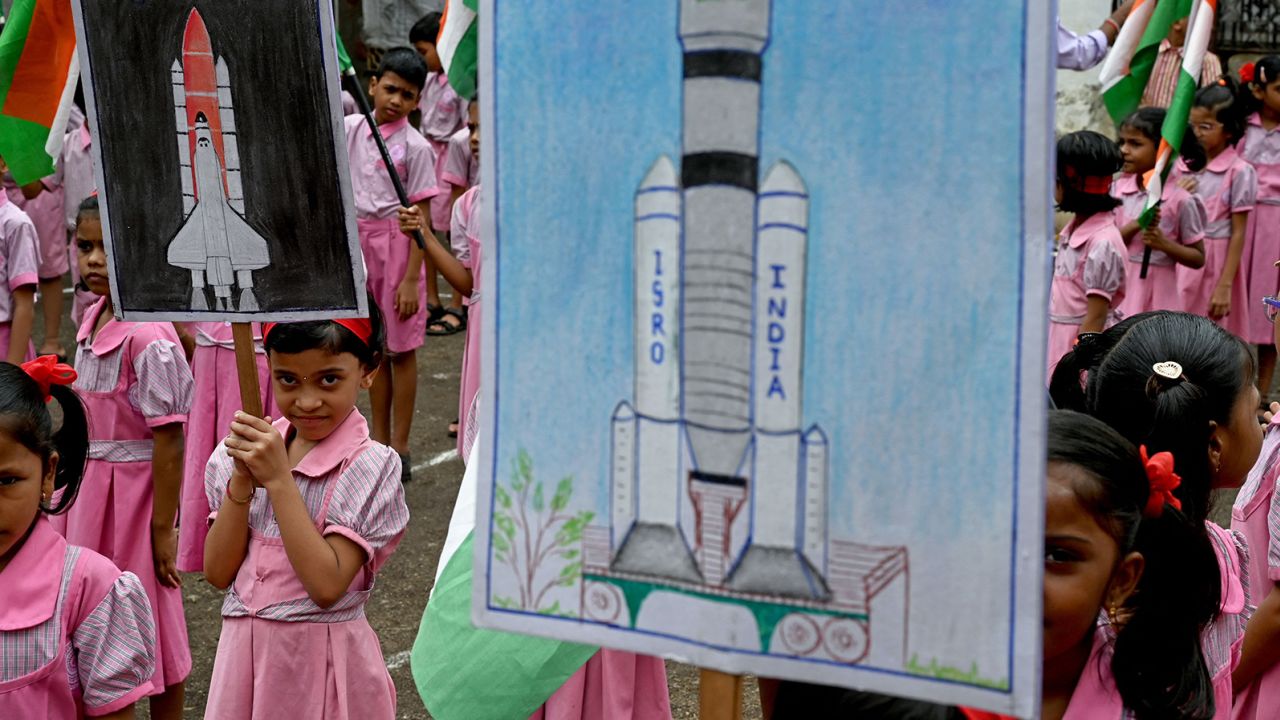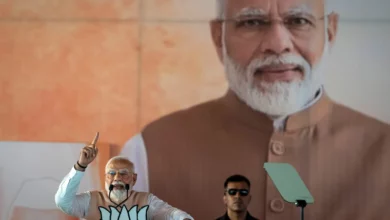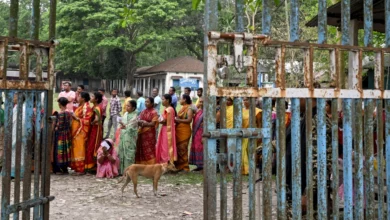
The mission could cement India’s status as a global superpower in space. Previously, only the United States, China and the former Soviet Union have completed soft landings on the lunar surface.
Chandrayaan-3’s landing site is also closer to the moon’s south pole than any other spacecraft in history has ventured. The south pole region is considered an area of key scientific and strategic interest for spacefaring nations, as scientists believe the region to be home to water ice deposits.
The water, frozen in shadowy craters, could be converted into rocket fuel or even drinking water for future crewed missions.
Indian Prime Minister Narendra Modi, currently in South Africa for the BRICS Summit, watched the landing virtually and shared broadcasted remarks on the livestream.
“On this joyous occasion…I would like to address all the people of the world,” he said. “This success belongs to all of humanity, and it will help moon missions by other countries in the future.”
India’s attempt to land its spacecraft near the lunar south pole comes just days after another nation’s failed attempt to do the same. Russia’s Luna 25 spacecraft crashed into the moon on August 19 after its engines misfired, ending the country’s first lunar landing attempt in 47 years.
As Chandrayaan-3 approached the moon, its cameras captured photographs, including one taken on August 20 that India’s space agency shared Tuesday. The image offers a close-up of the moon’s dusty gray terrain.
Chandrayaan-3’s journey
India’s lunar lander consists of three parts: a lander, rover and propulsion module, which provided the spacecraft all the thrust required to traverse the 384,400-kilometer (238,855-mile) void between the moon and Earth.
The lander, called Vikram, completed the precision maneuvers required to make a soft touchdown on the lunar surface after it was ejected from the propulsion module. Tucked inside is Pragyan, a small, six-wheeled rover that will deploy from the lander by rolling down a ramp.
The lander, which weighs about 1,700 kilograms (3,748 pounds), and 26-kilogram (57.3-pound) rover are packed with scientific instruments, prepared to capture data to help researchers analyze the lunar surface and deliver fresh insights into its composition.
Dr. Angela Marusiak, an assistant research professor at the University of Arizona’s Lunar and Planetary Laboratory, said she’s particularly excited that the lunar lander includes a seismometer that will attempt to detect quakes within the moon’s interior.
Studying how the moon’s inner layers move could be key information for future endeavors on the lunar surface, Marusiak said.
“You want to make sure that any potential seismic activity wouldn’t endanger any astronauts,” Marusiak said. “Or, if we were to build structures on the moon, that they would be safe from any seismic activity.”
The lander and rover are expected to function for about two weeks on the moon’s surface. The propulsion module will remain in orbit, serving as a relay point for beaming data back to Earth.
A global moon rush
Working alongside allies such as the United States and France, India is part of a second wave of emerging space powers. The country’s space program has become one of the world’s busiest in its development of exploratory space technology.
Chandrayaan-3 has been a point of national pride and widespread interest across India. Crowds gathered at the launchpad at Satish Dhawan Space Centre in Sriharikota in Andhra Pradesh state. On Wednesday, more than 8 million people tuned in to watch the livestream of the landing.

India’s mission has taken on even greater significance since Russia’s failed Luna 25 landing attempt. With the success of Chandrayaan-3, India became the second country to land a spacecraft on the moon in the 21st century after China, which has put three landers on the lunar surface since 2013 — including the first to touch down on the moon’s far side. (The last US lunar lander, the crewed Apollo 17 mission, touched down in 1972.)
More than a dozen countries have plans for missions to the moon in the coming years, including a mission launched by Japan’s space agency — the Japan Aerospace Exploration Agency — that is expected to lift off later this month. The United States also has plans to send three commercial lunar landers to the moon starting as early as this year, while NASA continues to work toward its Artemis III mission, which could put astronauts back on the moon as soon as 2025.
Landing on the moon, however, remains a challenging endeavor. India’s last attempt to land a spacecraft on the moon, during the 2019 Chandrayaan-2 mission, failed. And two commercial spacecraft have crash-landed on the lunar surface in recent times — one from Israel in 2019 and the other from Japan in April.
“There is no doubt that landing on the Moon is a real challenge,” NASA Administrator Bill Nelson said in a statement earlier this week. “But the Moon offers great scientific reward, which is why we’ve seen so many recent attempts to visit the surface again. We’re looking forward to all that we will learn in the future, including from India’s Chandraayan-3 mission.”
India is also a signatory of the United States’ Artemis Accords, a document that outlines proposed rules of the road for future lunar exploration. Russia and China have not signed the accords.
CNN’s Manveena Suri and Irene Nasser contributed to this story.



